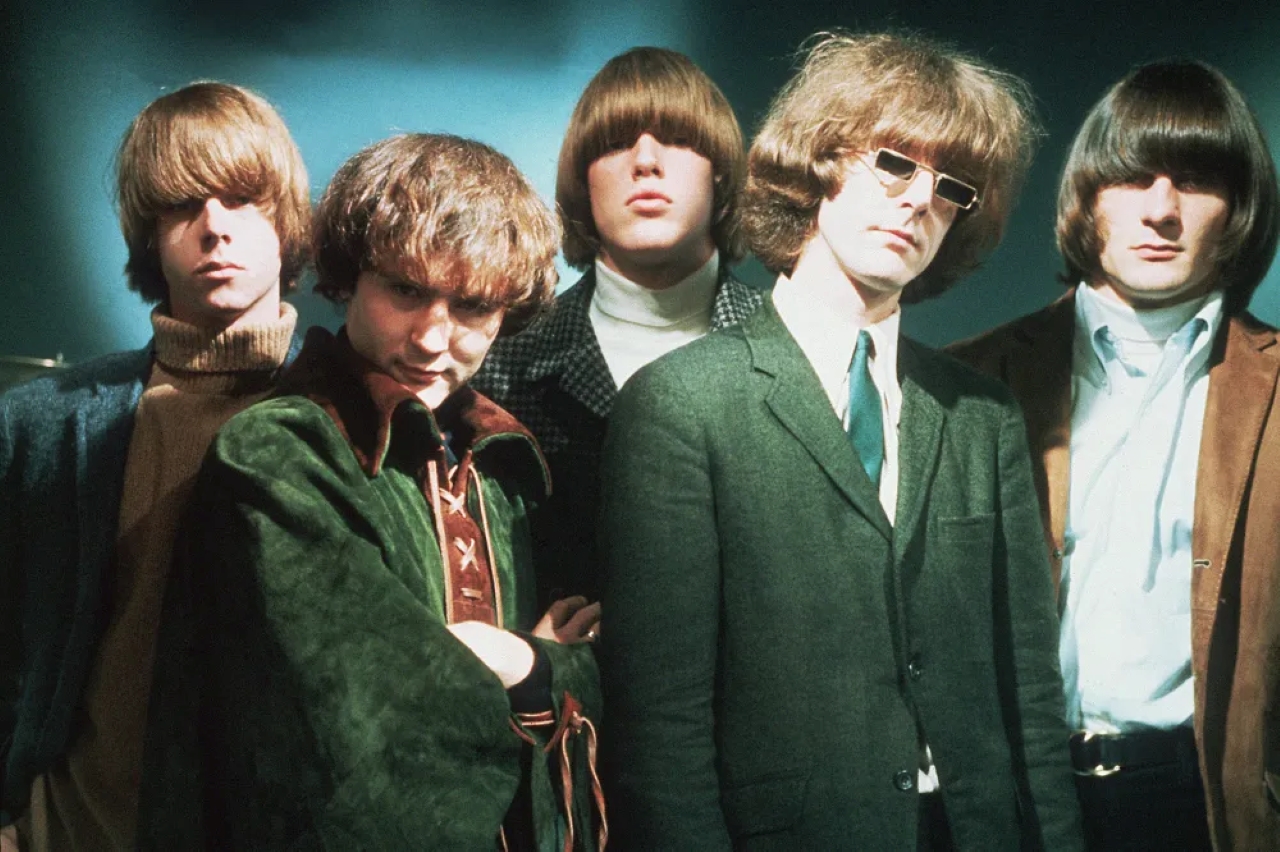🌾 A Band at the Crossroads
By the late 1960s, The Byrds had already carved their place in rock history. Their jangly 12-string guitars, tight harmonies, and folk-rock anthems like Mr. Tambourine Man and Turn! Turn! Turn! had defined the sound of an era. But success brought turbulence: lineup changes, ego clashes, and the never-ending search for new sounds.
When 1968 arrived, the band was in flux. Only Roger McGuinn remained from the original lineup, while Chris Hillman, who had slowly become more influential, pulled the group in a new direction. That direction was country.
The seeds of the shift were already planted. Hillman had grown up around bluegrass, while McGuinn had a restless ear for experimentation. But the spark that truly lit the fire was the arrival of a young, ambitious, and restless musician: Gram Parsons.

🎸 Gram Parsons: The Catalyst
Parsons wasn’t just a sideman. He was a visionary. He joined The Byrds in early 1968 as a keyboard player, but quickly revealed his real gift: a passion for blending country with rock in a way that no major band had done before.
He had a philosophy he called “Cosmic American Music”—a mix of country, gospel, rhythm and blues, and rock ‘n’ roll. He wanted to break down genre walls, and Sweetheart of the Rodeo became his laboratory.
When the band headed to Nashville to record, Parsons’ influence became undeniable. Traditional songs like I Am a Pilgrim and covers of country greats like Merle Haggard sat side by side with Bob Dylan’s You Ain’t Goin’ Nowhere. The album sounded nothing like The Byrds’ previous psychedelic explorations. It was twangy, heartfelt, and unapologetically country.
🏜️ Nashville Rebellion
Recording in Nashville was not without friction. The Byrds were seen as long-haired outsiders invading sacred country territory. Local musicians looked at them with suspicion, and even country radio refused to play the record.
The tension climaxed when The Byrds performed at the Grand Ole Opry. Instead of winning over the conservative audience, they were met with cold stares. McGuinn introduced Parsons to sing Hickory Wind—a song Parsons himself had written, dripping with nostalgia and aching honesty. The Opry crowd was unimpressed. For The Byrds, it was a humiliation.
But history would remember it differently. That moment became symbolic: rock and country were colliding, and though sparks flew, something lasting was being born.
🎶 Songs that Defined a Movement
The album may not have topped charts upon release, but its tracks carried seeds of revolutions to come:
-
“You Ain’t Goin’ Nowhere” – Dylan’s tune, reimagined with a country swagger, showcased how fluid boundaries between folk, rock, and country could be.
-
“Hickory Wind” – Parsons’ masterpiece, a song that captured the ache of leaving home and longing for a simpler past.
-
“I Am a Pilgrim” – A gospel-tinged traditional number that linked The Byrds to the deep roots of American music.
-
“Nothing Was Delivered” – Another Dylan cut, turned into a sly, almost cryptic country-rock jam.
Every track had an honesty and rawness that contrasted with the overproduced pop of the era.
🌟 The Fallout
Ironically, Parsons’ very influence on Sweetheart of the Rodeo became a point of contention. Due to contractual disputes with his former label, many of his lead vocals were erased and replaced with McGuinn’s. Parsons was furious.
Not long after, he left The Byrds entirely, taking Chris Hillman with him to form The Flying Burrito Brothers, a band that would take the country-rock experiment even further. Parsons’ later work with Emmylou Harris would cement his legacy as the godfather of country-rock.
For The Byrds, Sweetheart of the Rodeo marked both a turning point and an ending. They would never fully return to this style again, but the experiment had already changed the course of American music.
🌍 Legacy: Planting the Seeds of Country-Rock
When Sweetheart of the Rodeo first came out, it was met with confusion. Rock fans didn’t understand the twangy fiddles and steel guitars, while country fans dismissed The Byrds as hippie outsiders. It wasn’t a commercial hit.
But over time, the album became legendary. It influenced an entire generation of musicians—from the Eagles and Linda Ronstadt in the 1970s, to alt-country pioneers like Uncle Tupelo and Wilco decades later. Even the outlaw country movement, led by Willie Nelson and Waylon Jennings, echoed the rebellious spirit of what The Byrds attempted in 1968.
The irony? What seemed like failure at the time became the foundation for an entire genre.
🎵 The Song That Captures It All: Hickory Wind
If there’s one song that captures the soul of Sweetheart of the Rodeo, it’s “Hickory Wind.” Parsons poured his heart into it, singing of a lost innocence and the deep yearning for home. It wasn’t just country, it was universal.
The Byrds’ version still stands as one of the most poignant moments in their catalog—and a foreshadowing of Parsons’ too-brief but brilliant career.
🌾 Conclusion: When Boundaries Broke
Looking back, August 30, 1968, was more than just the release of another rock album. It was the day rock music learned to wear cowboy boots. The Byrds, with the unlikely guidance of Gram Parsons, redefined what popular music could be.
Sweetheart of the Rodeo didn’t just expand The Byrds’ legacy—it cracked open the door for country-rock, outlaw country, and eventually the Americana movement.
What began as a controversial experiment became one of the most influential albums in American music history.
Video